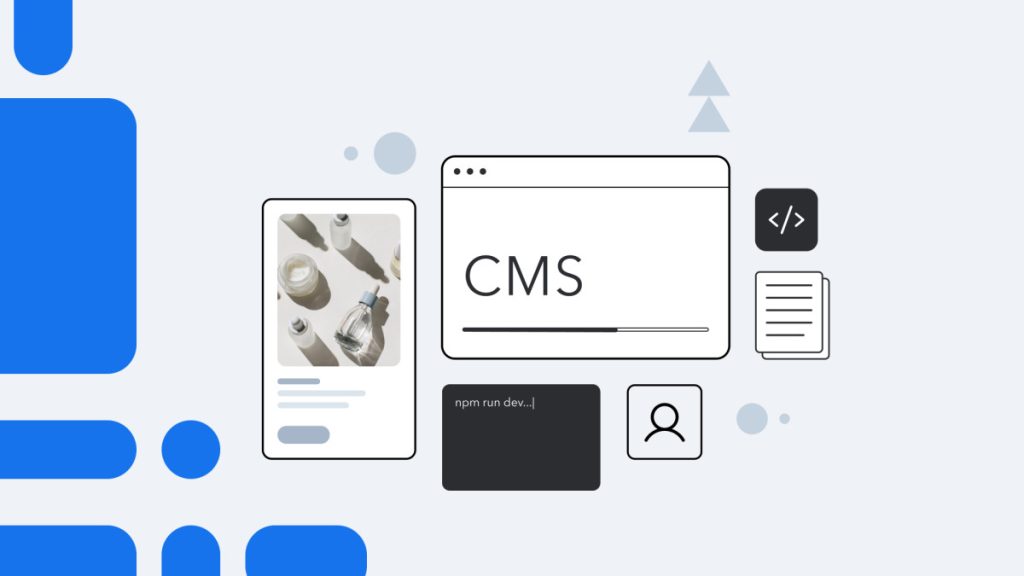Introduction
In the ever-evolving digital landscape, Content Management Systems (CMS) play a pivotal role in enabling individuals and organizations to create, manage, and publish content online. With a plethora of options available, understanding the different types of CMS can be instrumental in choosing the right platform to meet your specific needs. In this blog post, we’ll delve into the diverse types of CMS, ranging from open-source platforms to cloud-based solutions, providing a comprehensive overview for both beginners and seasoned users alike.
1. Open-Source CMS
Open-source CMS platforms such as WordPress, Joomla, and Drupal are widely popular for their flexibility, scalability, and extensive community support. Offering a range of themes, plugins, and customization options, these platforms empower users to create diverse websites, from blogs and e-commerce stores to corporate portals and community forums. The collaborative nature of open-source development fosters continuous innovation and community-driven enhancements, making them ideal choices for individuals and small businesses seeking cost-effective solutions.
2. Proprietary or Commercial CMS
Proprietary CMS, exemplified by platforms like Adobe Experience Manager and Sitecore, are owned and licensed by specific companies. These CMS often boast advanced features, robust security, and dedicated support services tailored to the needs of enterprise clients. While proprietary solutions typically incur licensing fees or subscription costs, they offer comprehensive solutions for large-scale projects requiring advanced functionality, customization, and integration with existing enterprise systems.
3. Headless CMS
Headless CMS, represented by platforms such as Contentful, Strapi, and Sanity, decouple content management from presentation, providing a flexible architecture for content delivery across multiple channels and devices. By exposing content through APIs, headless CMS enable developers to build dynamic websites, mobile apps, and IoT applications, while content editors enjoy streamlined workflows and content reuse. This approach is particularly advantageous for organizations seeking omnichannel content delivery, scalability, and future-proofing against technological changes.
4. Traditional CMS
Traditional CMS platforms, including TYPO3 and ExpressionEngine, offer an integrated approach to content management and website development, providing built-in tools for template creation, layout design, and content editing. While traditional CMS may lack the flexibility of headless solutions, they are well-suited for users seeking a unified platform for website creation and management without the complexity of separate systems. With features such as WYSIWYG editors, drag-and-drop interfaces, and built-in SEO tools, traditional CMS cater to a wide range of users, from novices to experienced developers.
5. Decoupled CMS
Decoupled CMS, blending elements of traditional and headless architectures, offer a hybrid approach that separates content management from presentation while maintaining some level of integration between the two. Platforms like Acquia and Magnolia provide flexibility, scalability, and interoperability, allowing organizations to leverage the benefits of headless architecture while preserving familiar editing interfaces and workflow tools. Decoupled CMS are ideal for projects requiring a balance between content flexibility and editorial control, catering to diverse use cases in sectors such as publishing, e-commerce, and digital marketing.
6. Cloud-Based CMS
Cloud-based CMS solutions, such as Contentstack, Prismic, and Agility CMS, offer the convenience of hosted platforms with the scalability and accessibility of cloud infrastructure. By outsourcing hosting and maintenance to service providers, users benefit from reduced IT overhead, automatic updates, and global availability. Cloud-based CMS are well-suited for businesses seeking rapid deployment, elastic scalability, and seamless collaboration across distributed teams. With features like multi-tenancy, API-first architecture, and microservices-based approach, these platforms empower organizations to deliver engaging digital experiences with agility and efficiency.
Conclusion
As the digital landscape continues to evolve, the choice of Content Management System plays a critical role in shaping the success of online ventures. Whether you’re a blogger, entrepreneur, or enterprise seeking to establish a digital presence, understanding the diverse types of CMS can guide you in selecting the right platform to meet your goals. Whether it’s the flexibility of open-source platforms, the sophistication of proprietary solutions, or the agility of headless architectures, there’s a CMS tailored to your unique requirements. By exploring the landscape of CMS, you can embark on a transformative journey towards creating compelling, dynamic, and impactful digital experiences.

